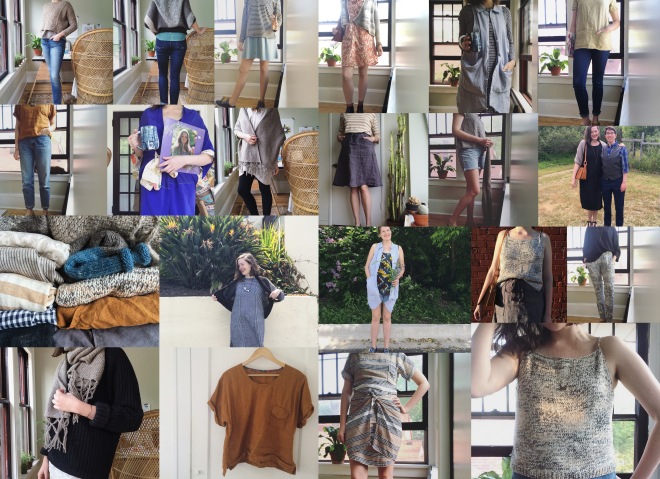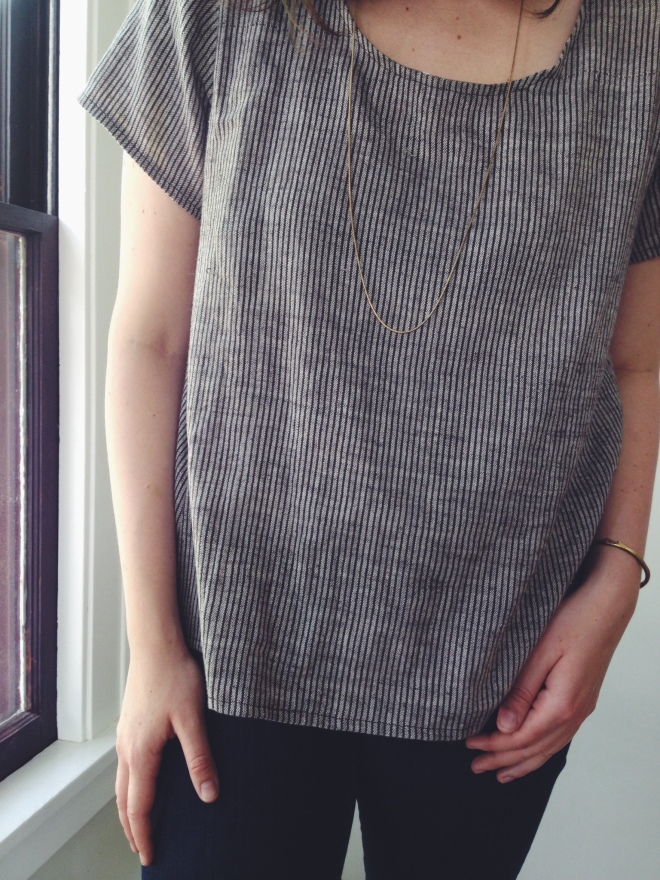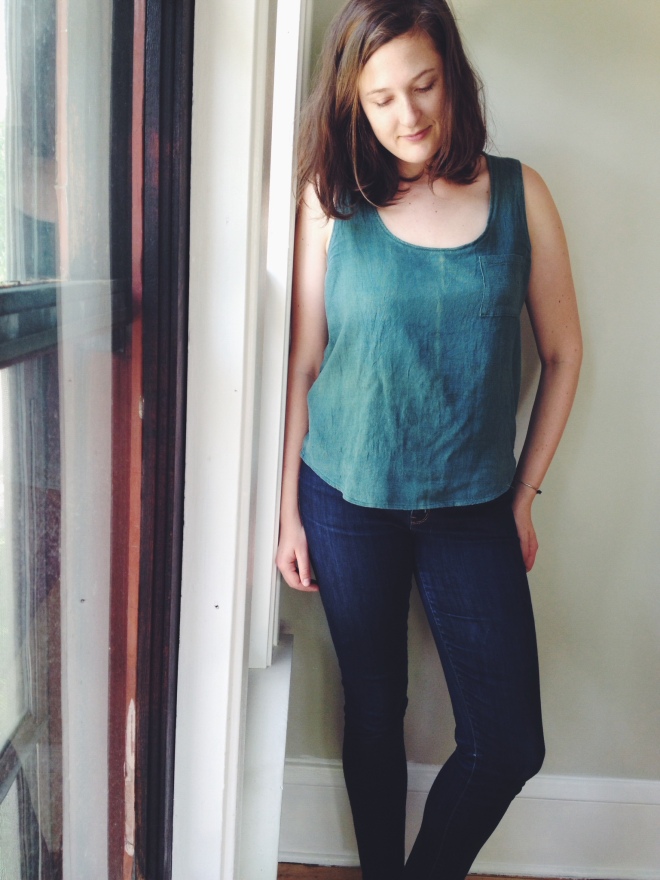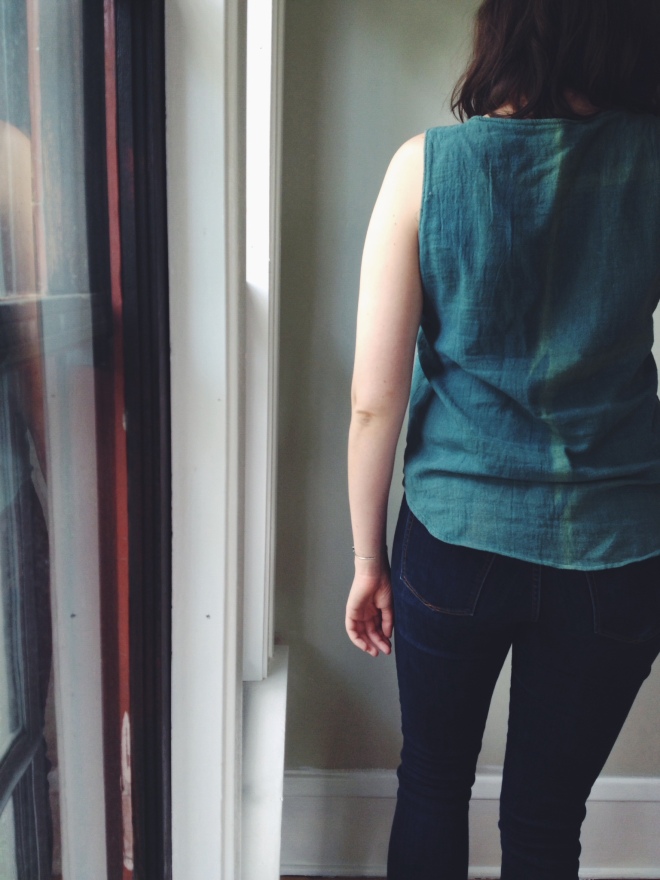
Things learned from (nearly) daily documentation of my handmade (by me) wardrobe:
- Lighting is everything. Bright, indirect lighting is the key to top-notch (amateur) photos.
- Windowsills and yoga mats make great tripod substitutes 😉
- My patience wears thin after about 4 self-timer photos
- Cropping out your face makes the photo selection process easier (fewer goofy expressions!)
- The online #memademay and/or maker community is really kind, chatty, and encouraging
- Posting a photo of yourself every day can be a really affirming ritual, and a good motivation to be a little more put-together
- But if you don’t feel like photographing yourself, capturing a still life nearby can help you slow down and appreciate the details
- Documenting everyday outfits, routines, and “me-mades” elucidates patterns – circling back to the Wardrobe Architect project which I never really finished, I can scroll through my Instagram feed and see what proportions, color palette, and styling I gravitate toward, and use this to inform future projects
On Selfies
I won’t lie, I felt rather self-indulgent posting a photo of myself nearly every day on Instagram for Me Made May 2016 – who am I, a #ootd fashion blogger?! I think this stems from my self consciousness to not be that millennial, but I really appreciate seeing how garment patterns look on people in the sewing and knitting community, and getting a glimpse at how people style their “me mades” and I like sharing and contributing to that too.
You can find details of what I wore throughout May on the corresponding Instagram photos.
On Digital Community
Posting Me Made May photos this year was a really fulfilling way for me to feel connected to the sewist/maker community. Working from home can be a bit of a roller coaster, where some days are quiet and self-directed, and some are action-packed with conference calls, meetings, and errands. Sometimes I’ll go to a coffee shop to get outside my home office and feel motivated by the energy there, and I just joined a co-working cooperative for a part-time office space. While I generally enjoy the peace and focus that working in an office of one (plus two cats) offers, it can also get lonely. Chatting with people on Instagram, especially people who share my interest in making and mending clothing, provides community on days when I’m alone at my desk.

In addition to flying solo, working from home can definitely impact your style. Working in my pajamas does NOT work for me – I really need the mental/emotional separation of getting dressed, sitting down at my workspace, and oddly, wearing shoes, to be focused and productive. And yet, while I certainly get dressed everyday, working at home has lowered the bar on what I wear every day. It’s nice not to have to get too put-together before starting my day, but it can also get kind of lackluster, so documenting my daily outfits and the me-made components definitely helped me revive my everyday effort. And since this was a busy and quite productive month for me work-wise, I’d say that effort carried over into my attitude and energy!
Do you work from home, or otherwise self-direct your days? I love the way Allie has been documenting the outfits and effects of everyday style for “My Handmade Month” over on Indie Sew.
On Capsuling
Funnily enough, just like last May, this month involved significant travel and necessitated a compact, versatile wardrobe. Jenn and I spent 10 days in California to celebrate a wedding (in “dressy casual” attire), camped in a tent for two nights at the wedding site, and then had a jam-packed week of catching up with Bay Area friends, family, and co-workers.

As I’ve noted before, I think traveling provides a great impetus to try the “capsule wardrobe” framework and plan an efficient and stylish wardrobe. As I packed up my suitcase to head home, I felt really satisfied with the versatility and comfort of what I packed and wore, and it was just the reassurance I needed to commit full-on to a “capsule wardrobe” mindset and closet re-set. More details on that coming soon!
p.s. Remember how I was going on about mustering up more political engagement in addition to personal projects? One exciting option, if you’re so inclined, is this petition to support industrial hemp cultivation in the US.

 Khadi is a term for handspun and handwoven cloth, but it is also emblematic of the movement for Indian self-reliance and freedom from British colonialism. Gandhi advocated for each person to spin their own cotton and each community to weave their own cloth so that the Indian people would create home-grown textiles rather than buying fabric back from the British who held tight control over the cotton markets. Gandhi encouraged a daily practice of spinning with a foldable spinning wheel or charkha and community-scale fiber farmning, weaving, dyeing, and block-printing; a true example that the revolution begins at home. (This cursory overview of the history of khadi was imparted by my teacher in India, Saatchi, and a brief stay in the village and ashram of
Khadi is a term for handspun and handwoven cloth, but it is also emblematic of the movement for Indian self-reliance and freedom from British colonialism. Gandhi advocated for each person to spin their own cotton and each community to weave their own cloth so that the Indian people would create home-grown textiles rather than buying fabric back from the British who held tight control over the cotton markets. Gandhi encouraged a daily practice of spinning with a foldable spinning wheel or charkha and community-scale fiber farmning, weaving, dyeing, and block-printing; a true example that the revolution begins at home. (This cursory overview of the history of khadi was imparted by my teacher in India, Saatchi, and a brief stay in the village and ashram of 



